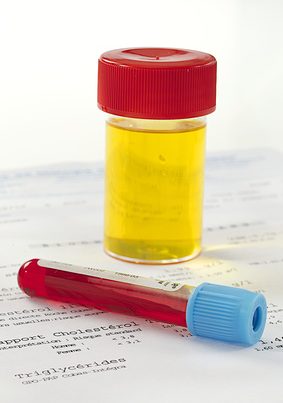
Once in nursing practice, students will pass medications every day. Therefore, it is essential that they possess a DEEP UNDERSTANDING of pharmacology. This is more easily said than done.
Currently, there are more than 5,000 medications used in practice and most nursing drug manuals are well over 1000 pages in length!
Nursing drug manuals have content areas that include:
- Indications
- Mechanism of action
- Pharmacologic classification
- Time/action profile
- Contraindications
- Side effects
- Interactions
- Route and dosages
- Nursing implications
- Patient education.
If a student has multiple medications to pass, what content areas of the drug manual are NEED to know and most important?
Mechanism of Action=NEED to Know!
Anatomy and Physiology (A&P) is a prerequisite for most nursing programs and is typically taught with little to no contextualization to nursing practice by non-nursing professors. Essential content and concepts such as alpha, beta receptors, preload, afterload, Starling’s law, and the classic formula CO=SVxHR have no clear clinical contextual hook for pre-nursing students to understand how relevant or important this is to nursing practice.
In clinical, most of my students were able to identify the pharmacologic classification of atenolol as a beta blocker. But when I asked:
“What is a beta blocker blocking?”
most students had no response or were unable to answer this simple question correctly.
Atenolol
This is the mechanism of action for atenolol as stated from Micromedex, an online data base used by many hospitals:
“Atenolol is a synthetic beta (1)-selective adrenoreceptor blocking agent without membrane stabilizing or intrinsic sympathomimetic activities. It inhibits beta (2)-adrenoreceptors primarily found in bronchial and vascular musculature at higher doses” (“Atenolol,” 2014).
In order to understand the physiologic impact of atenolol, students must be able to recognize the differences between beta 1 and beta 2 adrenergic receptors, and the physiologic effects of this beta blockage to the heart and lungs.
This is why it is imperative that nurse educators situate essential content/concepts from A&P to nursing practice and raise the bar of what is expected to be known and understood!
CO=SVxHR…NEED to Know!
CO=SVxHR is known to all nursing students. But do they UNDERSTAND this formula DEEPLY so they could describe in their own words how preload, afterload, and contractility influence cardiac output?
Let’s quickly review each component of cardiac output!
Cardiac Output
The amount of blood the heart pumps through the circulatory system in a minute. The amount of blood put out by the left ventricle of the heart in one contraction is called the stroke volume. The stroke volume and the heart rate determine the cardiac output. A normal adult has a cardiac output of 4-8 liters of blood per minute.
Stroke Volume
Stroke volume (SV) is the volume of blood pumped from one ventricle of the heart with each beat.
Stroke volume is influenced by the amount of blood that returns to right atrium from venous circulation (RIGHT SIDE) and left atrium (LEFT SIDE) from pulmonary veins.
- Higher SV increases workload of the heart…typically due to too much VOLUME.
- Tachycardia INCREASES cardiac oxygen demands, workload, and DECREASES stroke volume because there is less time for the ventricles to fill.
- Goal of medication therapy with any cardiac patient is to DECREASE cardiac workload through manipulating SV, HR, preload, afterload, and contractility.
Preload
Preload is the filling pressure of the right ventricle (RV) and left ventricle (LV). It is influenced by how full the body’s tank is and amount of venous return. Higher venous return (fluid volume overload) will result in higher SV. Fluid volume deficit will result in lower SV.
- Drugs that cause venous dilation (nitrates) DECREASE preload.
- Diuretics that eliminate excess fluid volume DECREASE preload.
Afterload
- Force of resistance that the LV must generate to open aortic valve.
- Correlates with systolic BP–How much pressure is needed to push blood out of the LV, and into systemic arterial circulation.
- Influenced by resistance of blood vessels in the body. Are the arteries dilated or constricted? If arterial vasodilation is present, afterload is DECREASED and workload of the heart is DECREASED. If arterial vasoconstriction is present, afterload is INCREASED and workload of the heart is INCREASED.
- Arterial vasodilators (Ca++ channel blockers [CCB], ACE inhibitors) DECREASE afterload and decrease the workload of the heart.
Starling’s Law of the Heart
- If preload is increased, a greater quantity of blood is ejected during systole due to increased stretch of the myocardium and larger amount of circulating blood volume present.
- But only up to a maximal point. Greatest force of contraction is when the muscle fibers are stretched 2 ½ times their normal length.
- Overstretch of cardiac muscle is like an overstretched rubber band; it will DECREASE cardiac contractility and efficiency over time. This is why an enlarged heart due to heart failure is NOT a good thing!
Contractility
- Contractility of the cardiac myocardium independent of Starling mechanism
- Influenced by Ca++ in action potential…Therefore, how will calcium channel blockers (CCB) influence contractility? (They will DECREASE contractility and must be used with caution in those with heart failure).
- Decrease in contractility (inotropic effect) DECREASES cardiac workload and O2 demands.
- Negative inotropic meds: CCB, beta blockers
- Positive inotropic: Digoxin, Dopamine and Epinephrine gtts.
Where the Rubber Meets the Road
Can your students take it to the next level of application and use this knowledge to understand the mechanism of action and how each of these determinates of cardiac output are specifically impacted by each major pharmacologic classification of cardiac medications including:
- Diuretics
- Nitrates
- Beta blockers
- Calcium channel blockers
- ACE inhibitors
This level of applied understanding should be the bar that is expected for the advanced student in your program. For example, based on the formula CO=SVxHR, would your students be able to readily identify how the mechanism of action impacts the following determinants of cardiac output for atenolol?
- Preload (no effect)
- Afterload (directly impacts by lowering systolic BP)
- Contractility (directly impacts by decreasing contractility)
- Workload of the heart (directly impacts by lowering workload due to reduction of afterload and lowering heart rate)
In Closing
Nursing education is in need of radical transformation (Benner, Sutphen, Leonard, & Day, 2010). One simple step that transformational nurse educators can take today is to decrease content saturation by emphasizing DEEP learning of what is MOST important to clinical practice.
In order to strengthen critical thinking, students must be able to USE and APPLY knowledge to the bedside.
By emphasizing not just rote memorization of the mechanism of action or determinates of cardiac output, but a deep understanding, students will not only be well prepared to pass the NCLEX®, but more importantly real-world clinical practice.
What do you think?
How do you integrate A&P and pharmacology in your class and clinical settings? What could you do differently to strengthen student learning?
Comment below and let the conversation begin!
References
Atenolol. Micromedex. (2014). Retrieved from http://www.micromedexsolutions.com/micromedex2/ librarian/ND_T/evidencexpert/ND_PR/evidencexpert/CS/039F3A/ND_AppProduct/evidencexpert/DUPLICATIONSHIELDSYNC/BD9C5B/ND_PG/evidencexpert/ND_B/evidencexpert/ND_P/evidencexpert/PFActionId/evidencexpert.DisplayDrugpointDocument?docId=048215&contentSetId=100&title=Atenolol&servicesTitle=Atenolol&topicId=mechanismOfActionPharmacokineticsSection&subtopicId=null
Benner, P., Sutphen, M., Leonard, V., & Day, L. (2010). Educating nurses: A call for radical transformation. San Francisco, CA: Jossey-Bass.
Keith Rischer – PhD, RN, CEN
As a nurse with over 35 years of experience who remained in practice as an educator, I’ve witnessed the gap between how nursing is taught and how it is practiced, and I decided to do something about it! Read more…
The Ultimate Solution to Develop Clinical Judgment Skills
KeithRN’s Think Like a Nurse Membership
Access exclusive active learning resources for faculty and students, including KeithRN Case Studies, making it your go-to resource.



